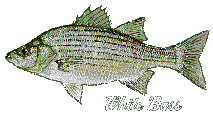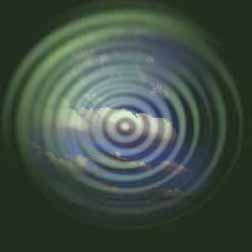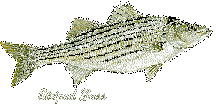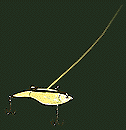Spring, and March in particular, typically provides THE best bass fishing for the entire year, so once warm weather arrives it's obvious the important things to think about are charging boat batteries, respooling reels with fresh line and filing just a little sharper point on the hook. The urge to get back out on the water and throw lures at lily pads and tree stumps can no more be controlled than the length of one's toenails: it's a matter of genetics and DNA codes, part of the immutable, mysterious ways of nature.
Interestingly, it was bass - not people - the poets actually were referring to when they described the impact of warm weatheron romance. The entire reproductive process of bass is triggered by the annual elevation of water temperature, which in turn sends them into a voracious feeding period that anglers look so forward to.
That's only one of the ways weather affects bass fishing. Knowing how to interpret weather conditions is an important key to more consistently successful fishing and often will advise you when you should get out on the water early or whether you should forget it and stay in bed.
Water temps, more than any other factor, influence the nature of bass and therefore if and how they should be pursued. Because bass are cold-blooded creatures without the necessary body chemistry to keep them warm, they are dependent on the temperatures around them. Just like us, they seek out the most comfortable levels, which varies according to the water depth.
In winter, the cold water makes bass almost dormant and they live at the deepest levels where the water is warmest. As the water warms, bass became more active. Their optimum temperature seems to be around 70 degrees with a narrow comfort range from 68 to 72, possibly 73 degrees.
The spawning urge is triggered when the water warms enough for the fish to move into the shallows. This may be as low as 60 - 65 degrees, still considerably less than the optimum range. Bass at this time are still sluggish and don't fight as heartily as they will in warm water.
The time to start searching the shallows for fish is when it appears that winter is finally over and there's been several days (perhaps a week) of warmer weather. Depending on the part of the country, shallow water may be from a few to 15 feet. This will still be the pre©spawn, but bass seem to feed more then than during the actual spawning period. Once they're on the nest, food doesn't appear to have the same priority.
Unfortunately, the weather may give several false starts and several more cold fronts may come through before spring finally sets in. That's okay: just before a front passes through, the fish will usually feed actively, then shut down for two or three days afterwards.
Oxygen level also influences fishing activity. Unless something is horribly wrong, all lakes contain enough oxygen for fish to do well. But keep in mind that the reason bass will often slap silly any bait you throw them after a March shower (as opposed to a frontal system) is because of the increased aeration that results when the rain forces more oxygen in the water. Bass fishing also typically picks up when it turns windy after a period of calm weather when there hasn't been a surface ripple.
Windy days are not always the most pleasant times to fish, but they occur for long periods in March. Rather than sit them out, take advantage of the conditions they create. Considering that bass shun bright sunlight, you're apt to find better fishing on the windy side of a lake where the ripples break up light penetration. For the same reason, look for fish to hang out on the windy side of a point instead of the calm, protected side.
 In these conditions, bass like baits that break up the water, too: chuggers, buzz-baits and baits with propellers, all worked quickly and erratically.
In these conditions, bass like baits that break up the water, too: chuggers, buzz-baits and baits with propellers, all worked quickly and erratically.
Poets have long associated the effect of the full moon on romance, and moon phase may also play a factor in fishing, too. The best known indicator of the phenomenon is the system of "Solunar Tables" developed by John Alden Knight more than 40 years ago and which many fishermen swear by. The tables are based on the belief that the gravitational pull of the sun and the moon trigger predictable feeding patterns in all animals (including us). These feeding periods, occurring in a major and minor way several times daily, are plotted on the "Solunar Tables" which appear in daily newspapers or on yearly calendars. However, Alden recognized that weather (most notably a falling barometer) can disrupt the pattern, so the tables should be regarded only as the probable times.
Moon phase is a hotly debated influence of fish behavior. Some anglers do their heaviest fishing on the days just before the full moon while others wait until the new moon. Proponents of each theory are usually dogmatic in their belief, based on personal experience, advice from guides or magazine articles or regional folklore.
From this discussion it's apparent that spring time and the full moon, factors the poets spent so much time writing about, are of equal or greater interest to fishermen who number in the millions. Fishing, along with tennis and golf, is right up there with our most popular participant sports.
If poets paid more attention to fishing, would more people today be paying attention to them?
Tim O'Keefe is the editor of Florida Fishing, the official fresh and salt water fishing publication of the State of Florida.






 In these conditions, bass like baits that break up the water, too: chuggers, buzz-baits and baits with propellers, all worked quickly and erratically.
In these conditions, bass like baits that break up the water, too: chuggers, buzz-baits and baits with propellers, all worked quickly and erratically.